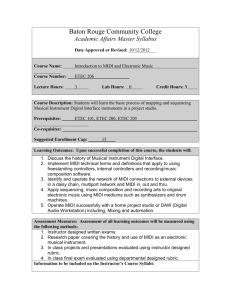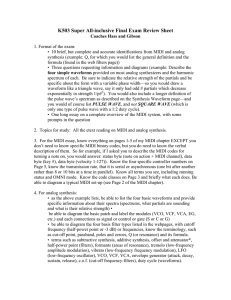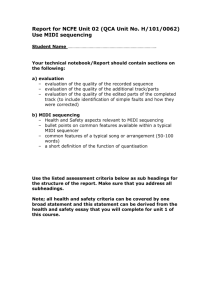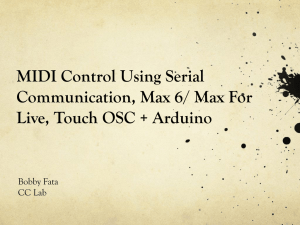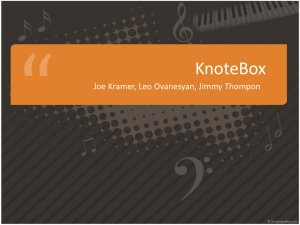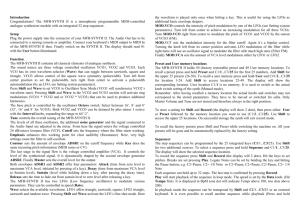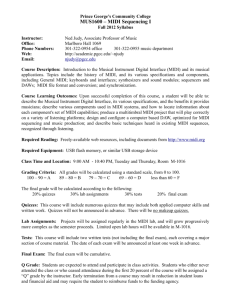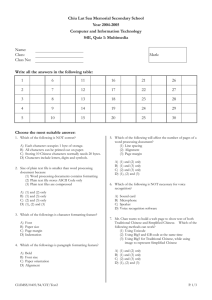6C_Base-40 ARithmetic
advertisement
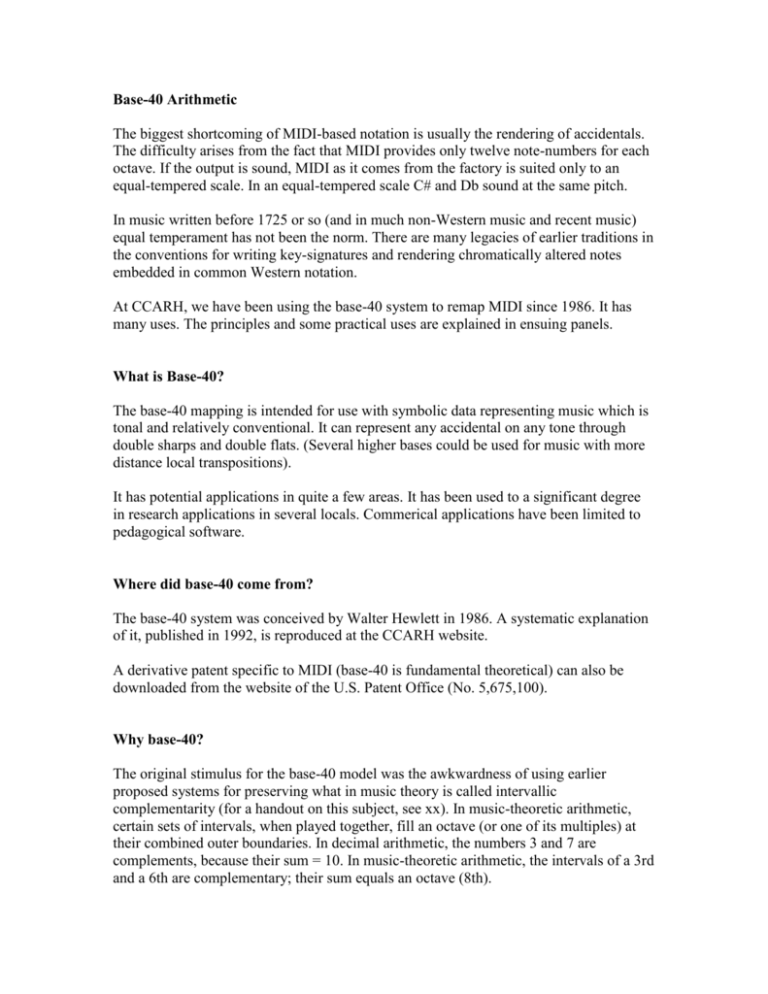
Base-40 Arithmetic The biggest shortcoming of MIDI-based notation is usually the rendering of accidentals. The difficulty arises from the fact that MIDI provides only twelve note-numbers for each octave. If the output is sound, MIDI as it comes from the factory is suited only to an equal-tempered scale. In an equal-tempered scale C# and Db sound at the same pitch. In music written before 1725 or so (and in much non-Western music and recent music) equal temperament has not been the norm. There are many legacies of earlier traditions in the conventions for writing key-signatures and rendering chromatically altered notes embedded in common Western notation. At CCARH, we have been using the base-40 system to remap MIDI since 1986. It has many uses. The principles and some practical uses are explained in ensuing panels. What is Base-40? The base-40 mapping is intended for use with symbolic data representing music which is tonal and relatively conventional. It can represent any accidental on any tone through double sharps and double flats. (Several higher bases could be used for music with more distance local transpositions). It has potential applications in quite a few areas. It has been used to a significant degree in research applications in several locals. Commerical applications have been limited to pedagogical software. Where did base-40 come from? The base-40 system was conceived by Walter Hewlett in 1986. A systematic explanation of it, published in 1992, is reproduced at the CCARH website. A derivative patent specific to MIDI (base-40 is fundamental theoretical) can also be downloaded from the website of the U.S. Patent Office (No. 5,675,100). Why base-40? The original stimulus for the base-40 model was the awkwardness of using earlier proposed systems for preserving what in music theory is called intervallic complementarity (for a handout on this subject, see xx). In music-theoretic arithmetic, certain sets of intervals, when played together, fill an octave (or one of its multiples) at their combined outer boundaries. In decimal arithmetic, the numbers 3 and 7 are complements, because their sum = 10. In music-theoretic arithmetic, the intervals of a 3rd and a 6th are complementary; their sum equals an octave (8th). [The nomenclature is shown in two panels at the end of this presentation.] Enharmonic-notation tiers The fully render the pitch of any note, one must record three-elements of information—a letter name, an octave number, and an inflection (#, b, n). If all music were (a) tonal, (b) written in C Major, and (–c-) devoid of accidentals, we could say that no inflection information would be necessary. In theory, however, every pitch has an inflection, with a default to the inflection indicated by the key signature. MIDI offers information about pitch and octave (combined in one key-number) which is invariably correct only at the diatonic level (and provided that no Cbs, E#s, et al.) were intended. Software providers usually make some attempt to interpret the correct rendering of black-notes correctly, but their algorithms are often not sufficiently robust to handle complex music, distant modulations, or minor keys. Between the base-7 (diatonic) and base-12 (MIDI; semi-chromatic) schemes an the base40 scheme for pitch representation, there are several intermediate schemes (e.g., 19, 21, 35), each more competent than its predecessor, but none quite sufficient to work in all circumstances. The arrows on this panel show some cases in which the base-12 and base-21 schemes break down. Curiously, the difference between base-35 (five iterations for each pitch name) and base40 is made up by five null tokens. These occur at the boundaries where, on a piano keyboard, black notes occur. In other words, the base-40 system can be said to nullify black notes but assigning black-note properties to adjacent white notes. What is MIDI-Plus? Although our early use of base-40 was oriented towards music transposition and analysis, we spent some time experimenting with its potential use to improve the accuracy of data conveyed through MIDI. MIDIPlus, patented by Hewlett in 1992, captures some rarely used bits of MIDI’s velocity byte to store information about inflection. One intended use is to enrich information passed through MIDI to get from one notational scheme to another. MIDIPlus in Printing Don Anthony prepared these examples to show the mapping of base-40 numbers to MIDIPlus numbers. Critical notes are higlighted. Base-40 in Music Theory Chord complementarity These panels show the customary nomenclature for musical intervals and how intervals are combined in chords. Summary Enharmonic details of notation are important in several application areas. If they are not in the original input, the burden will be expressed in the time taken to correct output. Information that begins with appropriate detail may also be stripped of its detail if it is passed through MIDI. For this reason, an interchange facility that permits greater detail (e.g., MusicXML) will often be preferable to MIDI as a distribution medium

